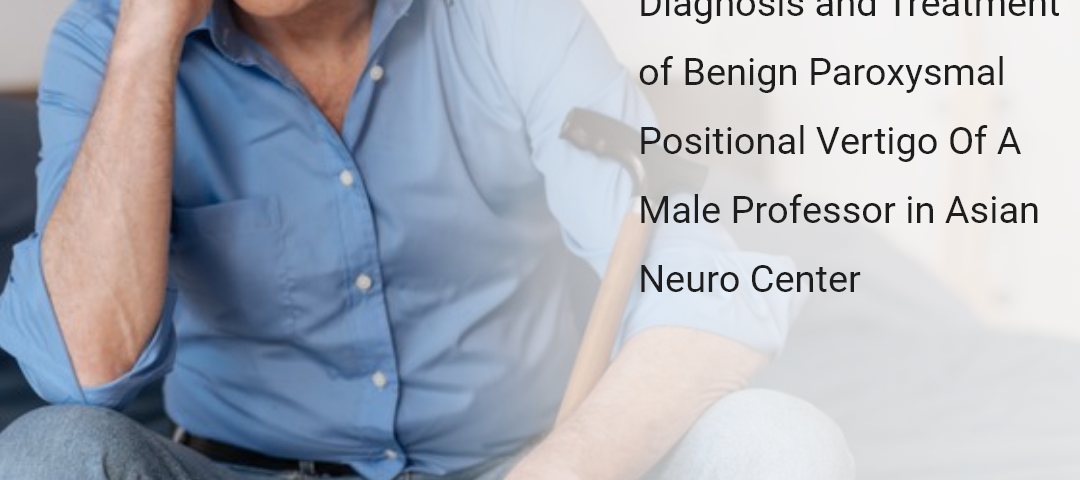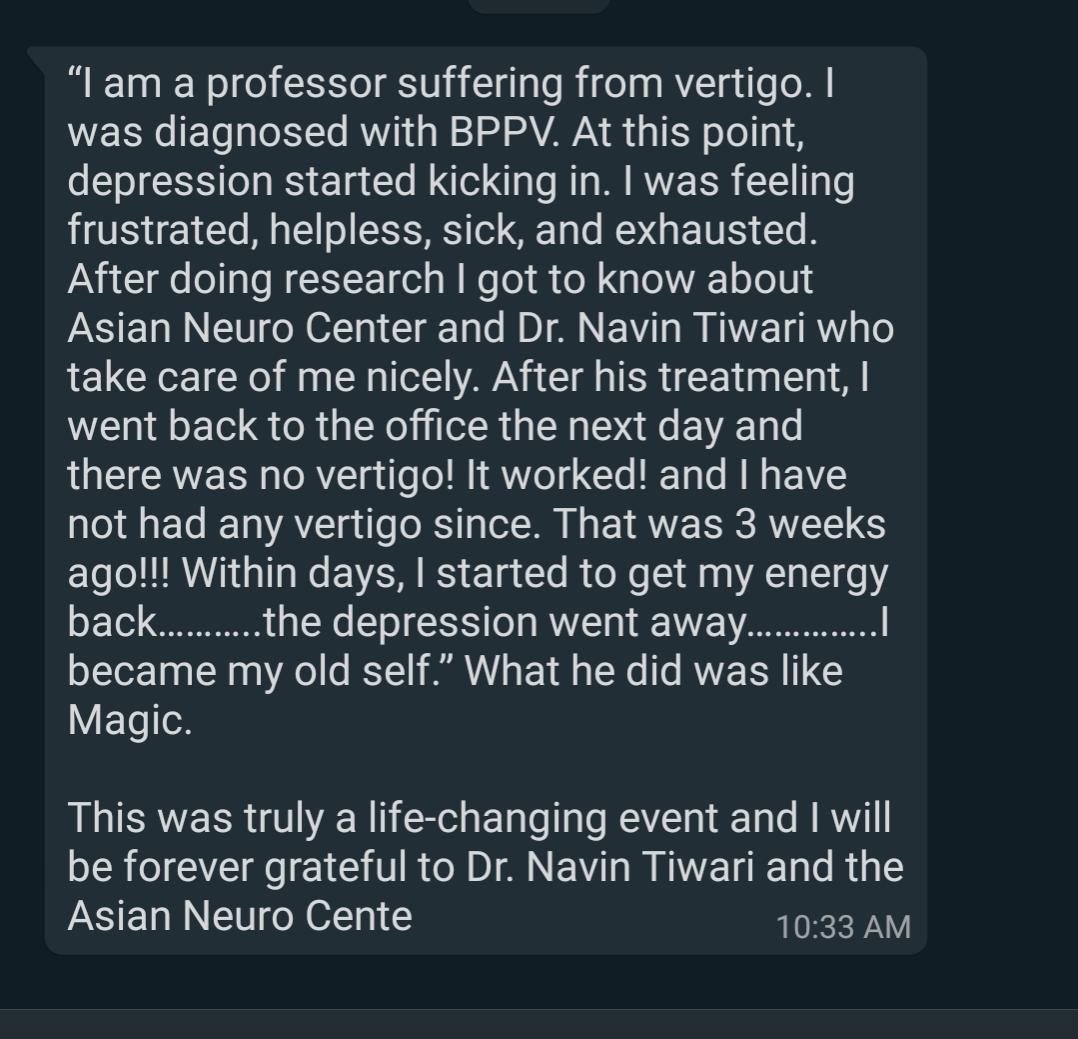- Have any questions?
- 911 12345 29
- info@asianneurocentre.com
“Now I Feel Like A Free Bird” Diagnosis and Treatment of Benign Paroxysmal Positional Vertigo Of A Male Professor in Asian Neuro Center

Things that A Parkinson’s Disease Patient Should Take Care of ?
May 22, 2021
How one should recognize that he or she had Essential Tremors?
May 28, 2021“Now I Feel Like A Free Bird” Diagnosis and Treatment of Benign Paroxysmal Positional Vertigo Of A Male Professor in Asian Neuro Center

Benign paroxysmal positional vertigo (BPPV) is a disorder arising from a problem in the inner ear Symptoms are repeated, brief periods of vertigo with movement, characterized by a spinning sensation upon changes in the position of the head. This can occur with turning in bed or changing position Each episode of vertigo typically lasts less than one minute. Nausea is commonly associated with BPPV is one of the most common causes of vertigo The vertigo sensation can range from mild to severe and usually lasts only a few minutes. It may be accompanied by other symptoms, including:
- Dizziness
- Lightheadedness
- A sense of imbalance
- Nausea
- Vomiting
SYMPTOMS AND CAUSES
BPPV develops when calcium carbonate crystals, which are known as otoconia, shift into and become trapped within the semicircular canals (one of the vestibular organs of the inner ear that control balance). The otoconia make up a normal part of the structure of the utricle, a vestibular organ next to the semicircular canals. (See illustration.)
In the utricle, the otoconia may be loosened because of injury, infection, or age. They land in a sac – the utricle – where they are naturally dissolved. However, otoconia in the semicircular canals will not dissolve. As a person’s head position changes, the otoconia begin to roll around and push on the tiny hair-like processes (cilia) within the semicircular canals. Those cilia help to transmit information about balance to the brain. Vertigo develops when the cilia are stimulated by the rolling otoconia.
- Paroxysmal—appears suddenly, and in episodes of short duration: lasts only seconds to minutes
- Positional—is induced by a change in position, even slight
- Vertigo—spinning dizziness, which must have a rotational component
- Torsional nystagmus—a diagnostic symptom where the top of the eye rotates toward the affected ear in a beating or twitching fashion, which has a latency and can be fatigued (vertigo should lessen with deliberate repetition of the provoking maneuver): nystagmus should only last for 30 seconds to one minute
- Pre-syncope—(feeling faint) or syncope(fainting) is unusual but possible
- Visual disturbance—due to associated nystagmus, making it difficult to read or see during an attack
- Nausea—is often associated
- Vomiting—is common, depending on the strength of vertigo itself and the causes for this illness
BPPV treatment of male professor in Asian neuro center
A 60-year-old male professor suffered from acute-onset dizziness following a lower limb soft-tissue treatment in prone lying. Symptoms included spinning vertigo lasting for 55’s, headache, visual vertigo, and disorientation. Clinical examination of balance and vestibular systems confirmed a left posterior canalithiasis benign paroxysmal positional vertigo (BPPV) and excluded other central and peripheral causes of dizziness.
Describe elaborate professor problem
The Professor’s main concern was momentary rotatory dizziness lasting no more than 55 s associated with a ‘visual juddering’, disorientation, and lightheadedness. This occurred when sitting up from lying, turning in bed (left to right), and fast head movements. He felt well in between with only a light disorientated feeling. The onset of symptoms started spontaneously a week prior to the specialist assessment when sitting up following a leg massage where he was required to lay prone for 20 min. Since then, the symptoms had stayed the same with no change to aggravating and easing factors and was occurring four to five times a day depending on activity. No symptoms were apparent at rest.
Suffering n his experience treatment
The professor a 60-year-old man who is currently working in the education field, his daily life includes standing hours for lectures and speaking continuously. He is mainly suffered from dizziness and imbalance. In the early stage of benign paroxysmal positional vertigo (BPPV) he ignores that problem but in the period of time, it’s growing and affect his mental health. His life became hell in his words.
After searching on google he gets to know the best place of treatment for benign paroxysmal positional vertigo (BPPV) is Asian Neuro Center, Dr. Navin Tiwari identifies his problem after some checkup and treated him well.
In Professor words:


